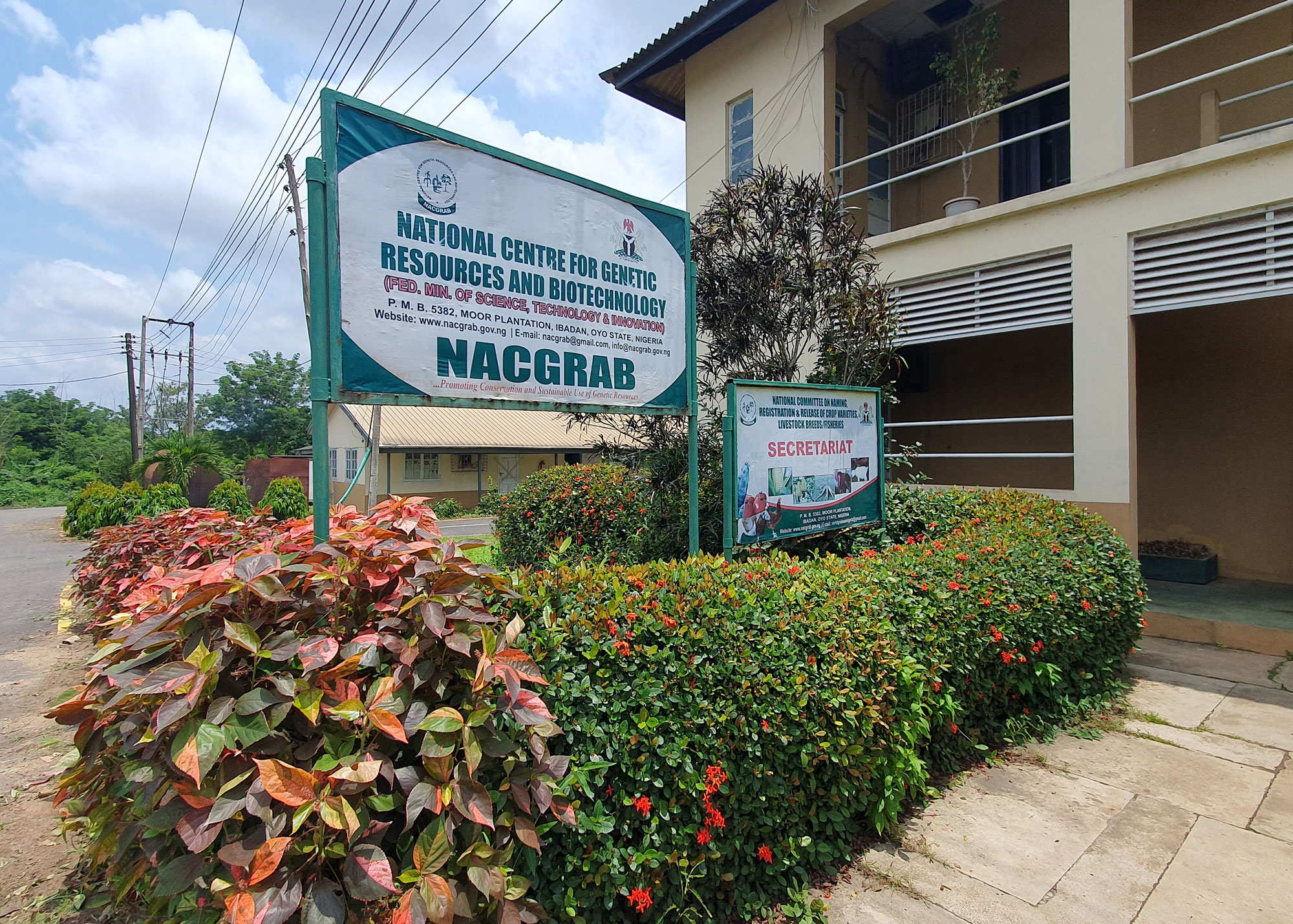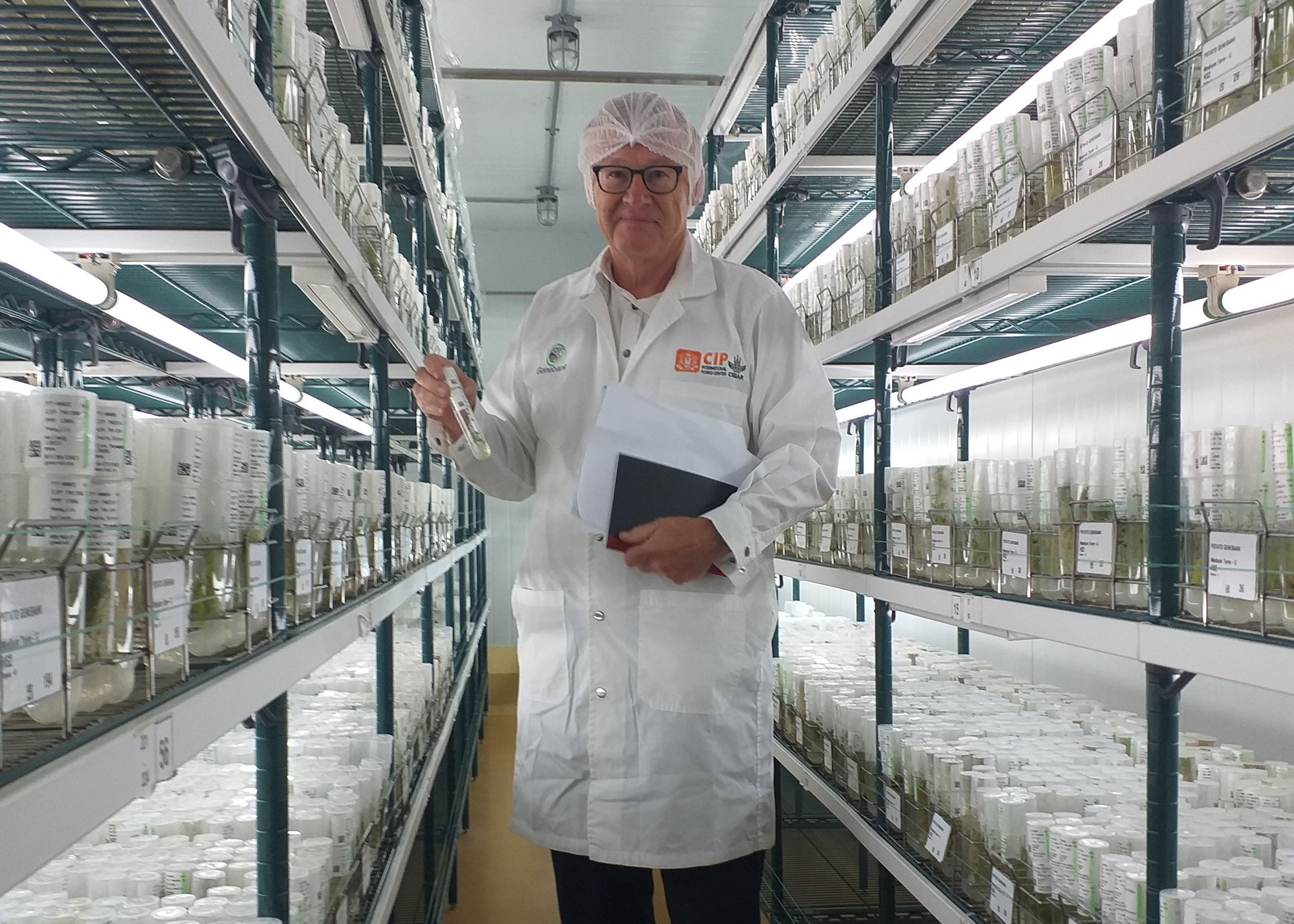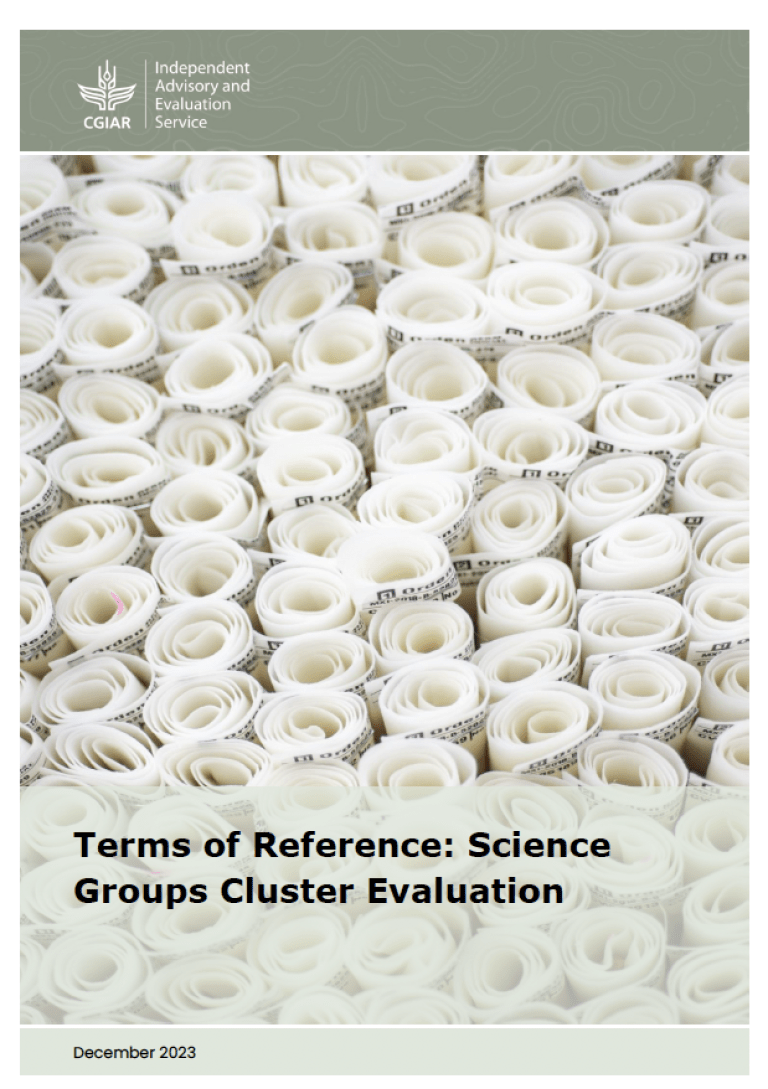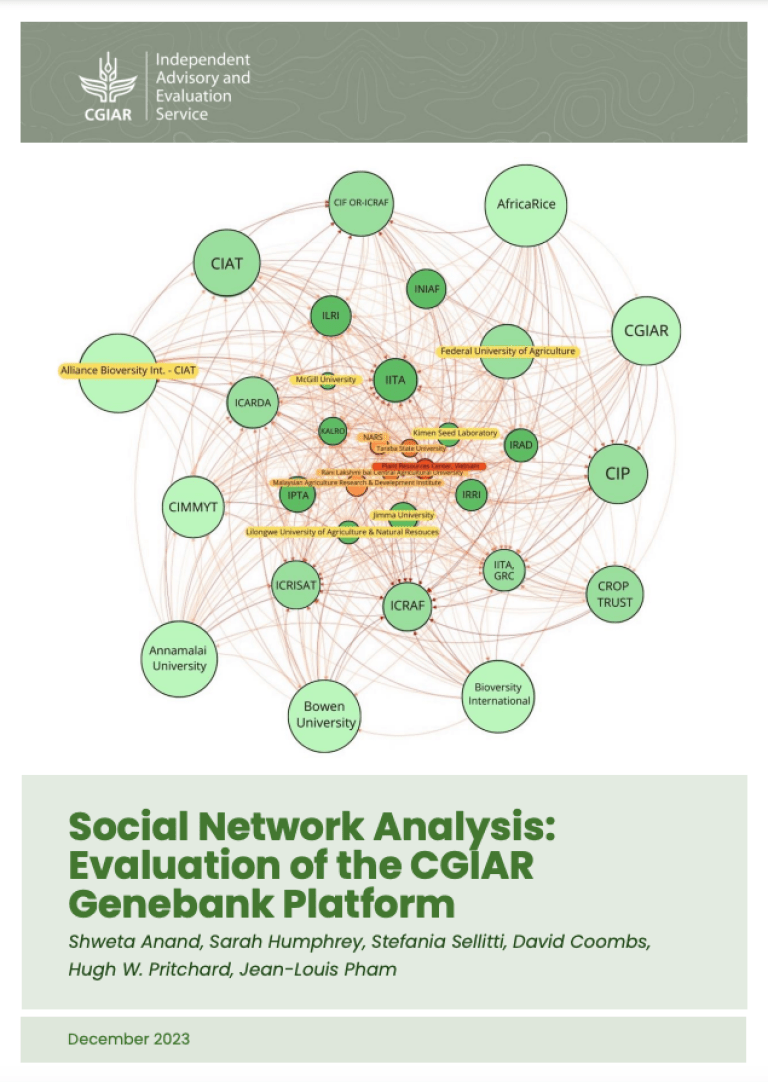In a recent interview, we sat down with Sarah Humphrey and David Coombs, co-leads of the 2023 Genebank Platform Evaluation, to delve into the intricacies of their recent evaluation that included visits to two genebanks of the CGIAR Centers.
What was the purpose of the fieldwork and visits to CGIAR centers and genebanks?
David: We deliberately focused on just two centers in Nigeria and Peru. While this might seem limiting, I want to clarify that this decision was strategic. The objective was to gain a deeper understanding of these centers, conducting a more thorough analysis of their operations and impact. Our aim was not only to identify strengths and weaknesses but also to explore connections with local partners, which are essential for CGIAR's success.
Sarah: Indeed, this was planned to be a streamlined evaluation. With about 85-90% of the genebank platform budget allocated among centers for the ongoing activities of genebanks, our main focus was on scrutinizing the platform's coordination activities managed by the Crop Trust, emphasizing activities that added value to individual genebank efforts. Understanding how this funding supported diverse centers was crucial, and the visits allowed us to reach a broader spectrum of internal and external stakeholders. We chose genebanks with distinct characteristics, varied connections, and unique challenges.

What key insights did you gather from your interactions with national partners?
Sarah: In exploring the dynamic collaboration between the International Institute of Tropical Agriculture (IITA) and a national genebank located some 130 kilometers from Nigeria's largest city, Lagos, the top key insights that emerged were:
- Ongoing Partnership: IITA’s collaboration with the national genebank is not confined to the platform's five-year duration; it represents a sustained and enduring partnership.
- Hands-On Support: IITA provides practical assistance, including essential materials, and equipment maintenance. The close working relationship between the IITA experts and the national genebank is evident.
- International Engagement: Looking beyond the period covered by the platform, CGIAR recently supported a national policy meeting involving policy experts from CGIAR and other international partners to mark Nigeria’s signature of the Plant Treaty.
David: Personal relationships are pivotal in the collaboration between the National Park and the centers, with the success of these partnerships often dependent on individual dynamics more than the platform itself. What stands out is the acknowledgment that, even with funding available, collaboration with national partners cannot be imposed. The autonomy of these partners in determining the course of their programs is a critical factor, underscoring the importance of mutual interest and readiness for joint initiatives.
How did the two visits contribute evidence to enhance the Genebank Platform's evaluation?
David: Our primary sources of insight were the comprehensive documentation of the platform, including all the produced results and background information. However, to truly understand the inner workings of individual centers, such as how the financial support flows in and out, whether they receive the necessary resources, and how they collaborate across centers, it was imperative to meet with the technical staff. Due to time constraints, we couldn't remotely interview numerous individuals from each center. Instead, we opted for face-to-face interviews with one or two representatives, recognizing the importance of gaining insights at different staff levels.
Sarah: Zooming out from the genebanks, our evaluations extended to external partnerships. We explored collaborations with national entities and engaged with users of the genetic material. These multifaceted interviews were key to comprehending the successes and challenges faced by each center, providing a nuanced understanding of the platform's impact.
What does success look like to national partners? What about SDGs?
Sarah: Well, the primary aim of the platform wasn't to enhance the capacity of national partners. Instead, the focus was on improving the performance of CGIAR genebanks, making them the principal recipients of the platform's support. While the work with national partners assumed a secondary role, it held significance in a broader policy context, particularly during the active negotiations surrounding the post-2020 framework and the Nagoya Protocol on genetic resources within the biodiversity convention.
The platform contributed primarily to Sustainable Development Goal 2 (End hunger, achieve food security and improved nutrition, and promote sustainable agriculture) and specifically to target 2.5.maintain the genetic diversity of seeds, cultivated plants, and farmed and domesticated animals and their related wild species, including through soundly managed and diversified seed and plant banks at the national, regional, and international levels.
Why do you believe that fostering internal and external relevance and coherence through partnerships is crucial for Genebanks and CGIAR centers?
David: Let's break down the concept of clustering, both internally and externally, which is vital for the relevance of our work. While the centers could operate independently within a country, the essence lies in connecting internally and externally. The centers and genebanks play a crucial role in conservation, but their impact is amplified when there's collaboration with users beyond their borders. The value of a collection increases when it can meet the specific needs of users, whether for breeding programs or crop cultivation. It's important to note that CGIAR centers, despite being significant entities, can't handle the entire conservation task alone. With hundreds of genebanks worldwide, covering numerous crops that CGIAR doesn't directly engage with, collaboration becomes essential. Ensuring the relevance and coherence of these partnerships is crucial, not only on a physical level but also at the policy level, making it an integral aspect of our global impact.

How can collaborations between CGIAR centers and national partners be structured to facilitate learning and accountability for inclusive partnerships?
Sarah: Our primary focus during visits was to understand the scope of activities, assessing what was done and what was intended. CGIAR is viewed as a large, established, and somewhat privileged global network. It's crucial to note that CGIAR, including through its other initiatives (and earlier CRPs and Platforms), engages extensively with national partners, extending beyond the genebanks and necessitating strategic decisions. Even though CGIAR's mandate covers 33 crops, it supports additional ones, exemplified by how IITA supports a bean collection for Africa, demonstrating the interdependence of the system beyond CGIAR's specific mandate.
David: If we look at the diverse mandate of CGIAR centers, it spans across doctoral and applied research, with a particular emphasis on genebanks and the continuous improvement of techniques for storing, regeneration, and managing various collections. Throughout the platform duration, considerable progress has been achieved, with a central goal of sharing this learning—both in practical application and foundational knowledge—with national collections.
A standout revelation was the existence of a community of practice within and between the centers and genebanks. This collaborative framework serves as a hub for shared learning and the evolution of techniques, emerging as a pivotal element of the platform's success. In our recommendations, we emphasize the need to broaden participation in these communities of practice, advocating for a more diverse array of individuals and organizations to engage in the learning process. This inclusivity, I believe, holds the potential for increased exposure and more effective knowledge dissemination.
Interviewed

Dr. David Coombs, a Genetics PhD and Biological Sciences BSc holder, brings four decades of professional expertise. With a background in plant breeding and seed specialization, he spent 20 years in the UK and European private sector. Transitioning to international development, he significantly contributed to agriculture, rural development, and food security over the next two decades, playing a pivotal role in major evaluations, including the CGIAR for the EU and the Roots, Tubers, and Bananas CRP review in 2020 and the Excellence in Breeding Evaluation in 2021. His extensive experience encompasses program analysis and the production of numerous technical and evaluation papers and reports.

With over 30 years of experience in environmental research and policy, Dr Sarah Humphrey is a seasoned professional in program development and institutional strengthening across Africa, Asia, and Europe. Serving as a team leader in over twenty evaluations, her expertise lies in multi-country projects, particularly in environmental and climate adaptation domains. In her earlier international roles with IUCN, WWF International, and the European Commission, Sarah contributed to ecosystems, water resources, and natural resources management. Sarah holds a PhD in environmental management evaluation and an MBA specializing in development management.



